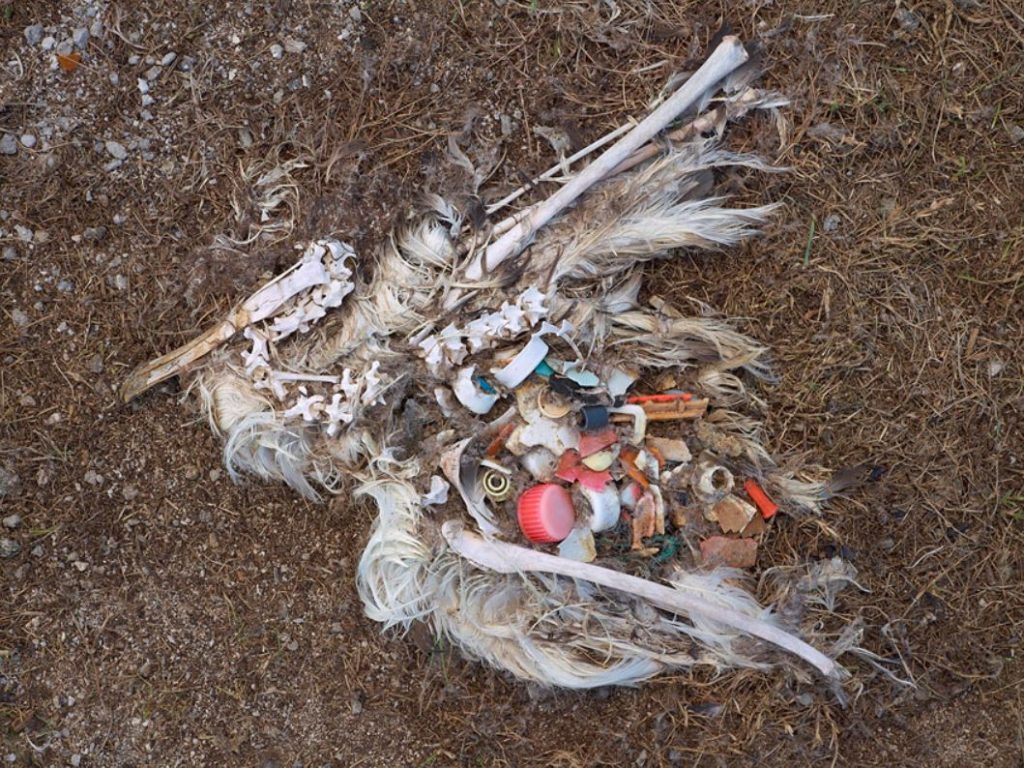Time to Choose: Caution Ahead or Disaster Averted?
Scientists have warned that the world would have to cut greenhouse gas emissions in half by as soon as 2030 if the aim is to limit warming in this century to just 1.5 degrees Celsius (we’re at 1 degree Celsius/2 degrees Fahrenheit already, and yes that’s significant at the planetary scale). That means we’ve got 11 years to curb carbon and that means we have to start now. Whether we conquer our carbon addiction or continue the binge, the subsequent tale will be told by future generations.
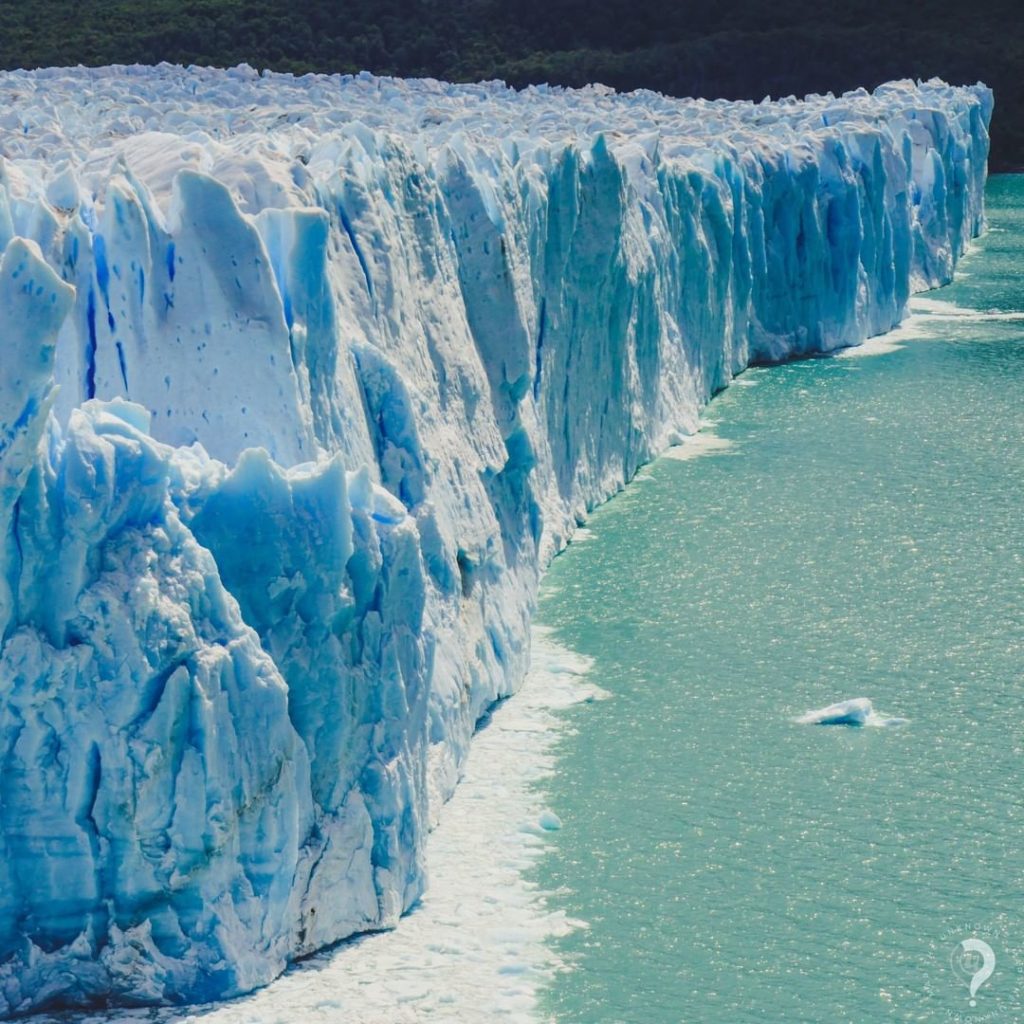
Image: Glaciar Perito Moreno in Argentina by @maptheunknown, with permission.
It’s a tall order isn’t it? Cut emissions across all sectors of the economy, in order to limit warming to 1.5° degrees Celsius. We need political leadership on this issue; but we can’t wait for it (particularly in the U.S.); it’s time to act. As society changes, politics will follow.
“You say you love your children above all else, and yet you are stealing their future in front of their very eyes.”
Greta Thunberg, climate activist
Trends show us slowly making progress in the right direction, but how do we speed the rate of carbon cutting? Bloomberg’s energy outlook suggests we could hit 50% of electricity from renewables by 2050 – but we will need to push hard to achieve that, and that figure doesn’t address transportation and industry emissions. We’ll have to push even harder to reach the target of reducing total emissions by 50% by 2030-2040. It is possible; we have the technology and the tools (cheaper batteries, lowering solar production prices, improving efficiency in equipment, etc.); but we will need to shift to low carbon lifestyles, business practices, policies and public infrastructure.
Art & Climate Change
So if we know we need to change, what motivates people to actually change? Two key motivators for people to make changes are personal experience with a particular issue or problem, and the belief that what we do can make a difference. Many of the artists working with the climate change topic seek to address one or both of these psychological elements.
Prof. Christian A. Klöckner, Climart
“Can visual art affect viewer perceptions of climate change?” The answer is yes.
“The Floods”, Nathalie Miebach
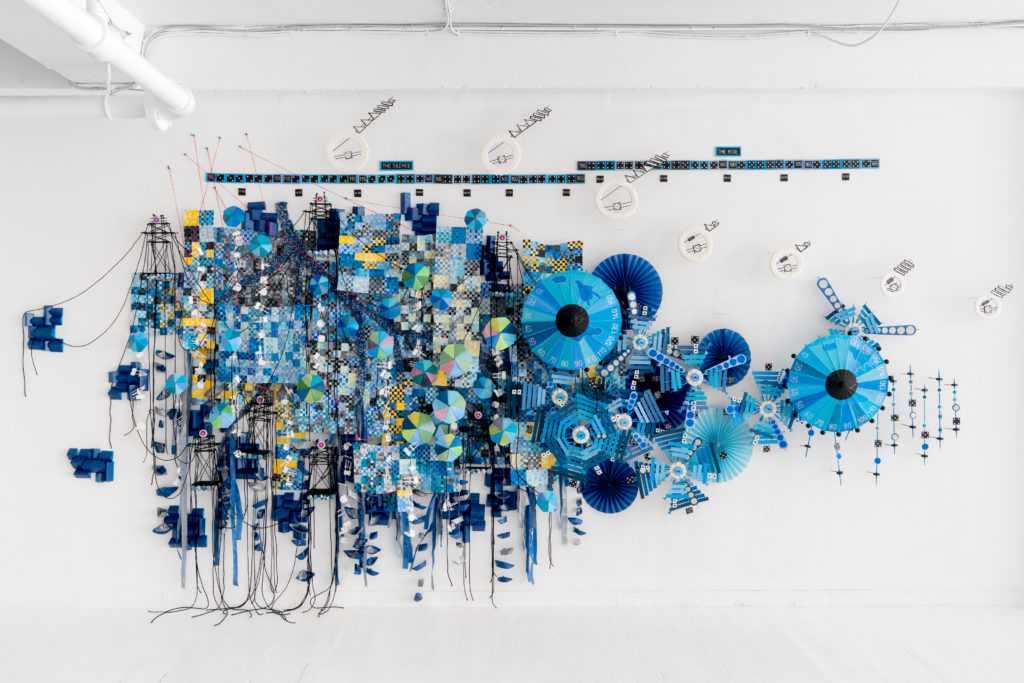
17’x10’x2′, 2018. Photo by: Jean-Michael Seminaro, used with permission of the artist.
Nathalie Miebach uses weather data to generate 3-D sculptures. She transforms the numbers documenting changing weather patterns into colorful woven swirls of reeds, grasses, wood, paper, yarn & rope. “The Burden of Every Drop” is a visual tale of Hurricane Maria – about the fierceness of the wind and rain, about the data silence as all electrical systems broke down, about the vastly underestimates death toll, about rebuilding and about people leaving the Puerto Rico. The piece combines weather and other numerical data with anecdotal information from the news in the aftermath of the storm, with the right side representing wind data coming into a crescendo to the left as it hits Puerto Rico, represented by an unraveling quilt.
When asked about the impetus behind her weather weavings, Nathalie shared that “one of the things I have learned is that it is very difficult to get people to speak about Climate Change. It’s such a political topic that most people feel uncomfortable talking about that. I think that’s dangerous for the future of this planet and our own survival. If we don’t know how to talk about it, we won’t change and continue living as if Climate Change is a topic that only concerns scientists and politicians.” However, she found that people will share their weather stories; it’s a more personal link to climate change, often involving devastation and destruction. We experience weather every time we walk outside, and the patterns of that weather is already changing. This week alone saw a multitude of super storms across the central U.S. Is that the weather you grew up with? Extreme weather is on the rise; think what 10 or 20 more years along this trajectory might bring.
“Pollution Pods”, Michael Pinsky
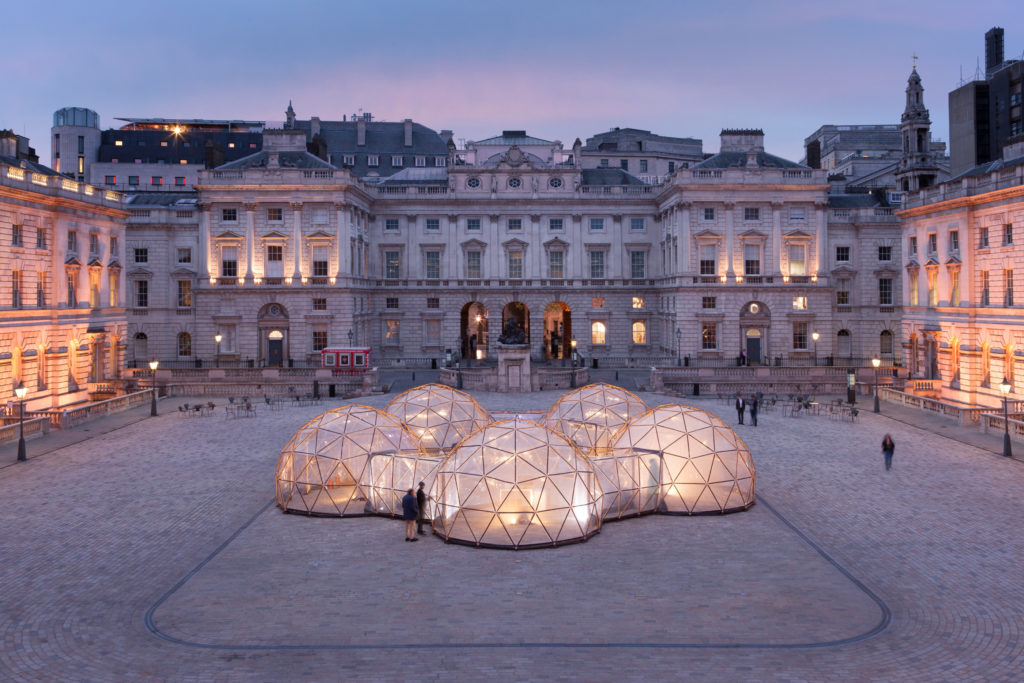
Visual artist Michael Pinsky teamed up with Climart, an international climate & art research project, to create the “Pollution Pods”. The pods are an installation of geodesic domes that contain carefully mixed recipes emulating the relative presence of ozone, particulate matter, nitrogen dioxide, sulphur dioxide and carbon monoxide which pollute London, New Delhi, San Paolo and Beijing. The pods were envisioned as a way to provide visitors with a personal experience of climate change, and to help answer a critical question, “Can visual art affect viewer perceptions of climate change?” Per Climart’s coordinator, Prof. Christian A. Klöckner, the answer is yes. The project’s findings show that the pods “trigger strong emotional responses in the visitors through the visceral experience they provide. These emotions then seem to be an entry point into thinking about air pollution and climate change and ones role in this issue… Some people feel motivated to act.” Pinsky’s TedxFreiburg talk “Cars: It’s a Question of Culture” explores in more depth what he sees as a critical cause of the climate crisis – the combustion engine, “get rid of [those types of] cars, get rid of the pollution.” Simple in word, not in deed. Policy, urban design, transportation planning, and efficient mobility technology all need to shift to a lower carbon mode – but only if demanded by the citizens of the world.
“Greta Thunberg”, Brooke Fischer

Botanical artist Brooke Fischer combined her blooms with the a call to action from youth eco-activist Greta Thunberg, in her painting of the same name. The work embraces and celebrates the blunt but hopeful challenge in Greta’s words. Fischer states that, “We both believe that humans are in for a rude awakening if we do not take action now. We can all help the planet now.” From changes in our daily lives, to voting for politicians that support reducing emissions, to “voting with our wallets”, we do have the ability to effect change. It is our youth that will pay the highest price, which may be one reason why concern about climate change is highest among Americans aged 18-34.
“Trojan Horse: Exploring Issues Around Climate Change”, Margot Cormier Splane
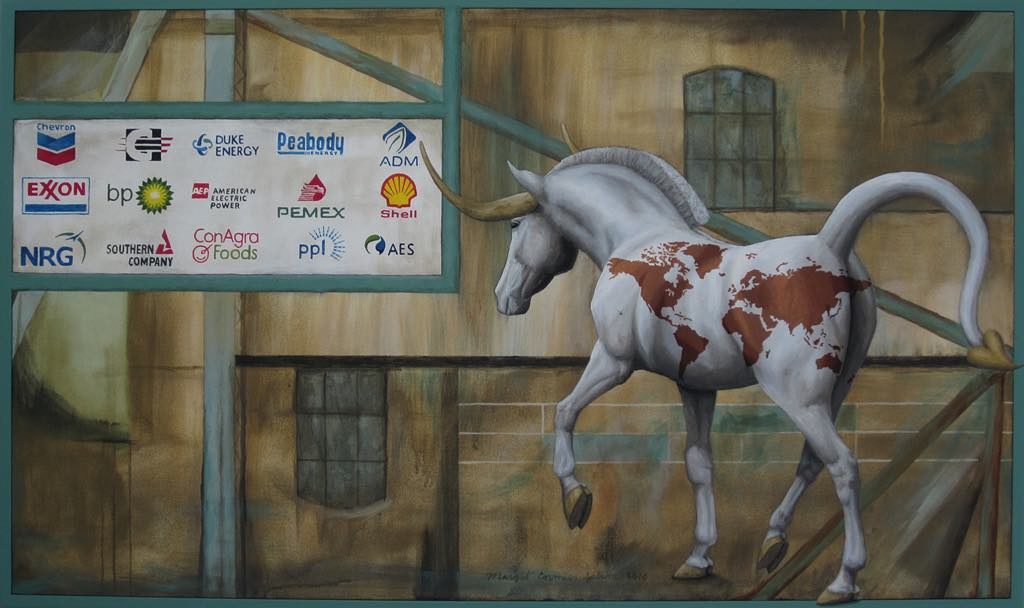
Margot Cormier Splane sees art as a means to share her views with an audience. Her Trojan Horse series focuses on her concern for the environment. “Trojan Horse Follows the Money” can be summed up as profit over planet, which translates also to profit over people. Many companies, particularly large corporations, focus on stock holders and the bottom line, at the expense of all else. In fact, U.S. law requires them to do so, unless a company’s mission statement makes reference to environmental, social justice, or other philanthropic goals. Time, population growth, consumerism, habit, and inertia compound the impacts of putting profit above all else, but Cormier Splane believes we can make a difference. We know it won’t be easy, but it is vital that we take action, “because the ball is rolling, and the faster Climate Change occurs, the harder it is going to be to stop it in the future.”
To see more eco artworks exploring Climate Change, visit @the_art_of_sustainability on Instagram.
Change for Climate
Artists across the globe have embraced the climate conundrum and call on the collective “us” to make change. Our individual actions can and do make a difference. I’ll refer to Canadian academic, speaker and environmental activist extraordinaire, David Suzuki, “In a world of more than seven billion people, each of us is a drop in the bucket. But with enough drops, we can fill any bucket.” Are you ready to fill the bucket and help cut carbon? See the Top 10 Things You Can Do About Climate Change, or my own shorter version here:
- Use less energy – walk, bike, bus or train to work, weatherize your home, buy efficient appliances when it’s time to replace them.
- Support renewables – from asking your university or workplace to divest from carbon industries, to purchasing, supporting, invest in, and voting for renewable energy (solar, wind, geothermal, etc.) – to grow the pro-planet industries of the future.
- Eat foods that are made with less energy, i.e. more plants, less meat.
- Buy less, and buy recycled or reused.
- Support carbon taxes to put a price on pollution.
- Vote (and make your voice heard).
Thank you for reading! Please subscribe to receive notification of monthly blog posts, and comment below to share your thoughts.





